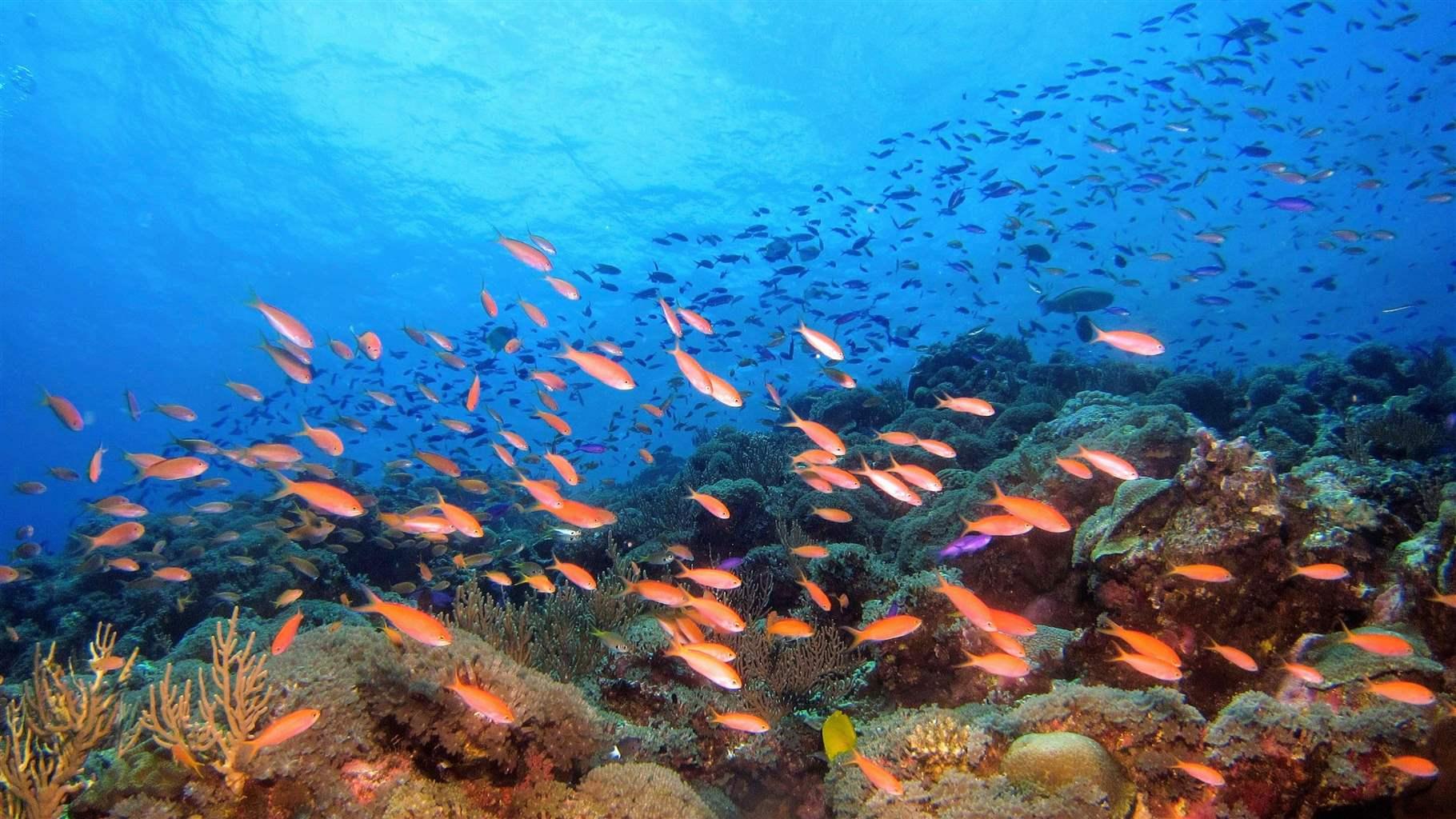New Framework Helps to Clearly Define Marine Protections and Benefits
MPA Guide provides guidelines for design and implementation of protected areas

Despite progress in recent years toward a common understanding around what qualifies as a marine protected area (MPA), ocean experts, governments, advocacy groups, and others still often disagree on the definition of an MPA and what activities should be allowed within them. Now, new research provides clear and precise guidelines for describing MPAs by four characteristics: the activities permitted within them, their level of protections, how they are governed, and the likely outcomes they’ll have for people and biodiversity—parameters that should help all stakeholders better measure ocean safeguards worldwide.
The multidisciplinary, peer-reviewed paper “A Framework to Achieve Global Goals for the Ocean: The MPA Guide” was led by researchers at Oregon State University and published September 10 in the journal Science. The Pew Bertarelli Ocean Legacy Project made a significant academic contribution to the research, which provides a crucial and timely addition to the global conversation about the need for, and efficacy of, MPAs. As momentum builds toward the global adoption of a target to protect at least 30% of the ocean by 2030 within the Convention on Biological Diversity (CBD), it is important that policymakers and stakeholders understand the potential outcomes from different types of MPAs, for both biodiversity and human well-being.
The MPA Guide provides an international framework for determining how much of the ocean is protected—something that is difficult to calculate now because of the lack of international consensus around what “protected” means for marine habitats. Currently, there are numerous categories of MPAs, ranging from fully protected areas to multiple-use zones that allow for significant resource extraction. Each is designated with its own unique monitoring and enforcement regime and funding allocation. This has caused significant confusion about protected areas, raising questions that include: What qualifies as an MPA? What ecosystem and social outcomes will specific MPAs deliver? And how much of the ocean is currently protected?
According to the World Database on Protected Areas, 7.65% of the ocean is covered in existing MPAs. However, it’s unclear how many of those are actively managed and protected at levels able to achieve conservation goals included in international targets. The MPA Guide clarifies the ambiguity by establishing definitions for protected areas and enables a full evaluation of the protections and conservation outcome they provide. This approach can be readily adopted worldwide, including within the post-2020 global biodiversity framework, which the CBD is designing.
Recognition of the need to protect marine life to help sustain the benefits that humankind receives from the ocean is not new. For example, island communities in Oceania have been actively managing fisheries for centuries for this purpose. However, the global movement to protect marine species and habitats has grown exponentially in the past 20 years, as damage to marine ecosystems by industrial fishing and other harmful human activities has become increasingly apparent. The past two decades have brought a growing body of scientific evidence that MPAs are a highly effective policy tool to safeguard ocean biodiversity. This has led to the significant growth of designations of MPAs by governments.
Studies have demonstrated that well-designed and well-managed MPAs, especially fully protected reserves, can restore ocean health by protecting biodiversity, enhancing ecosystem resilience, supporting fisheries productivity, and safeguarding unique cultural traditions historically tied to the seas. Understanding the expected outcomes—for example, fully versus lightly protected—can help scientists and policymakers make decisions about how best to protect the ocean.
Matt Rand is the director and Johnny Briggs is a senior officer for the Pew Bertarelli Ocean Legacy Project. Angelo Villagomez is a senior officer working on marine habitat protection at The Pew Charitable Trusts.








